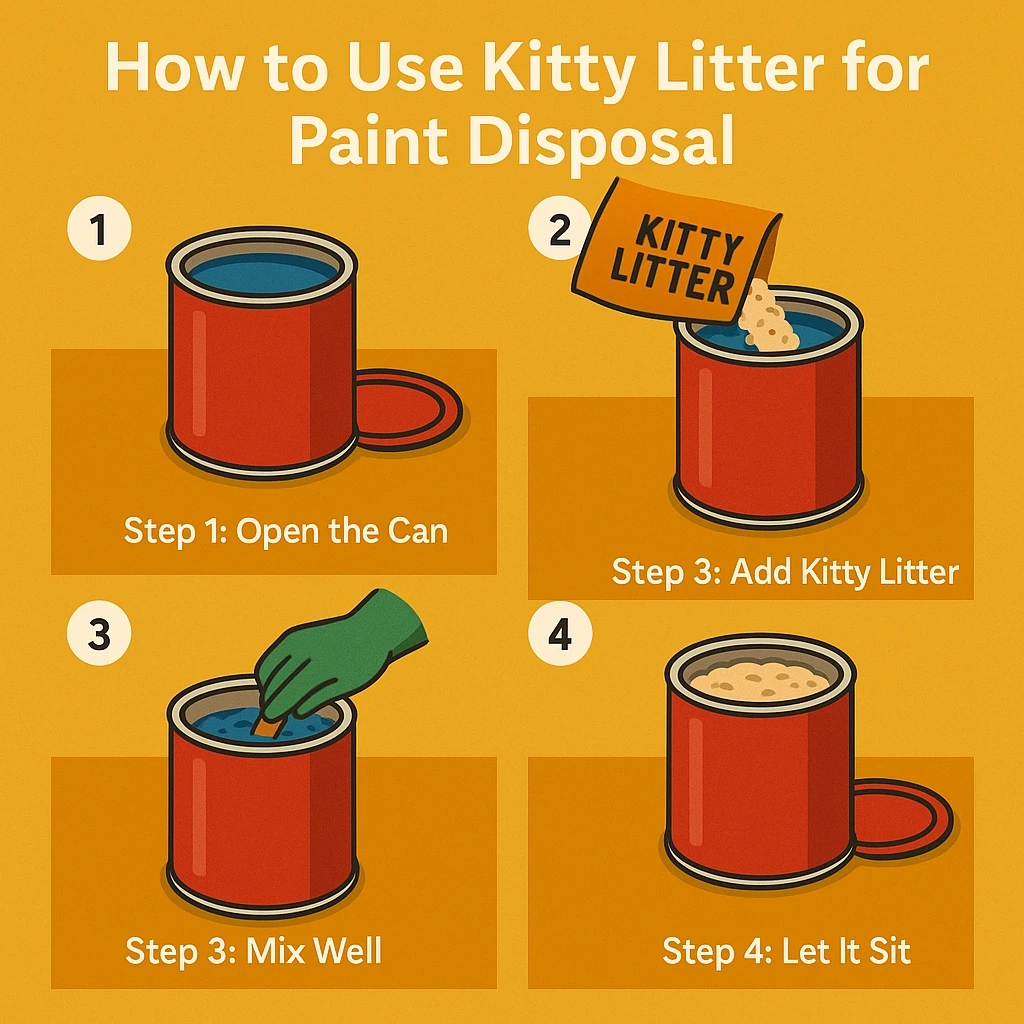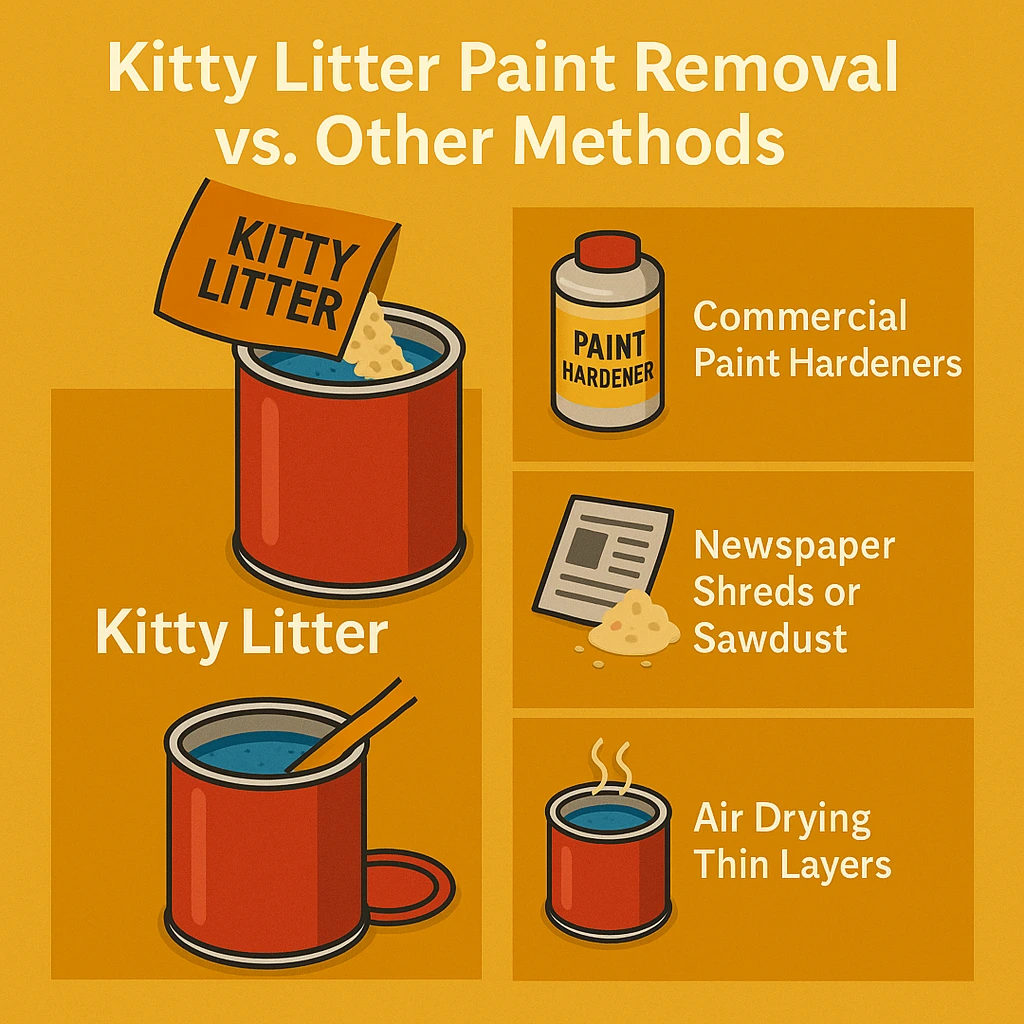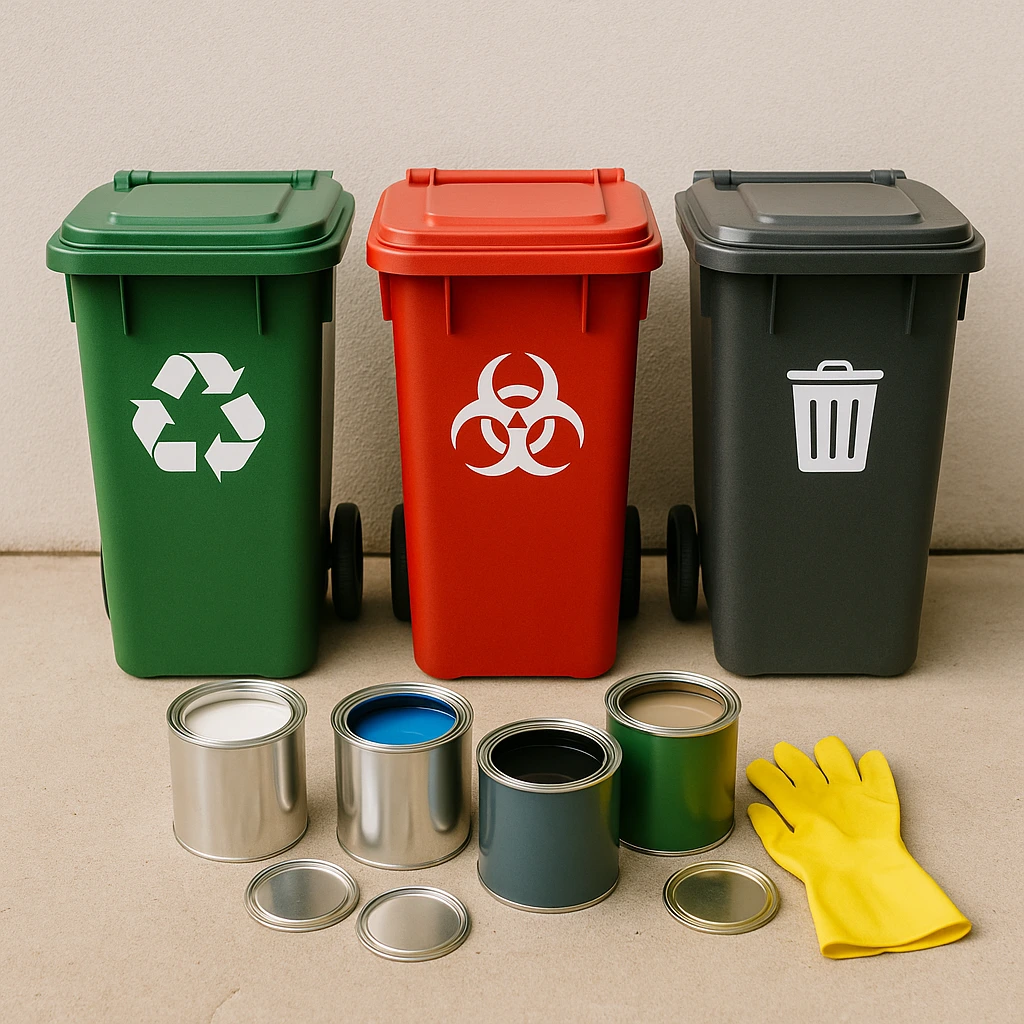Disposing of old paint can feel tricky, especially when you’re left with half-full cans you can’t just toss in the trash. A common hack many DIYers use is kitty litter. But can you use kitty litter to get rid of old paint cans safely? The answer is yes, when done correctly. Kitty litter helps dry paint, making it safe for disposal and keeping harmful chemicals out of the environment.
In this guide, we’ll explore how kitty litter works for paint disposal, step-by-step instructions, and important safety tips.
Why You Can’t Just Throw Away Liquid Paint
Most waste collection services won’t accept liquid paint because it can leak, damage equipment, and pollute soil or water. That’s why you need to focus on drying paint cans for disposal first. This is where kitty litter comes in, it absorbs moisture and accelerates drying, turning paint into a solid that’s safer to throw away.
If you’re working on a bigger project, it also helps to plan ahead. Knowing how long it takes to paint a room or how to make paint dry fast can save you from leftover cans piling up.
How to Use Kitty Litter for Paint Disposal
The process is simple, budget-friendly, and effective. Here’s how to use kitty litter for safe paint can disposal:

Step 1: Open the Can
Remove the lid and make sure the paint is accessible. If there’s only a thin layer left, you might not even need kitty litter, just let it air dry.
Step 2: Add Kitty Litter
For fuller cans, pour an equal amount of inexpensive, clay-based kitty litter into the paint. This mixture works as a kitty litter paint dryer by soaking up liquid quickly.
Step 3: Mix Well
Stir the paint and kitty litter together until it forms a thick, oatmeal-like texture.
Step 4: Let It Sit
Leave the can uncovered in a safe, ventilated area for 24–48 hours. The mixture will harden, making it safe to throw away with your household trash.
This simple method transforms messy liquid paint into a solid block, ideal for kitty litter paint disposal.
Kitty Litter Paint Removal vs. Other Methods
You might wonder if kitty litter paint removal is the only option. While it’s the most common household trick, alternatives include:
- Commercial paint hardeners: Designed specifically for paint drying but costlier.
- Newspaper shreds or sawdust: Also absorb liquid but less effective than kitty litter.
- Air drying thin layers: Works well for small amounts of leftover paint.

Still, kitty litter is often the easiest and cheapest way to handle paint cans for cat litter disposal. And if you ever need to get rid of paint from surfaces instead of cans, methods like removing paint with steam can be a safe alternative.
Can You Dry Paint Cans Without Kitty Litter?
Yes, you can. If there’s just a thin layer left, you can let the paint dry naturally. However, for half-full or larger cans, drying takes weeks without an additive. Kitty litter makes the process faster, safer, and more convenient.
When tackling other home projects, preparation is just as important. For example, learning how to clean walls before painting ensures your paint job looks fresh and lasts longer.
Safety Tips for Kitty Litter Paint Disposal
Before tossing your dried paint cans, keep these safety tips in mind:
- Check local regulations: Some areas have paint recycling programs instead of landfill disposal.
- Leave the lid off: Many waste services prefer the lid removed so they can confirm the paint is hardened.
- Avoid oil-based paints: These may need to be handled at a hazardous waste facility.

And if you’re wondering whether it’s worth the effort, remember that small habits like this protect your home and environment, much like the benefits of painting your home extend beyond just looks.
Final Thoughts: Is Kitty Litter the Best Solution?
So, can you dry paint cans with kitty litter and safely throw them away? Absolutely. It’s quick, cost-effective, and widely recommended by municipalities. Whether you’re finishing a big DIY project or just cleaning out your garage, kitty litter offers a simple solution for leftover paint.
If paint projects are on your horizon, you might also explore tips on how to stain a fence or the best tools to paint a ceiling so you can work smarter and avoid unnecessary waste.

Leave a Reply